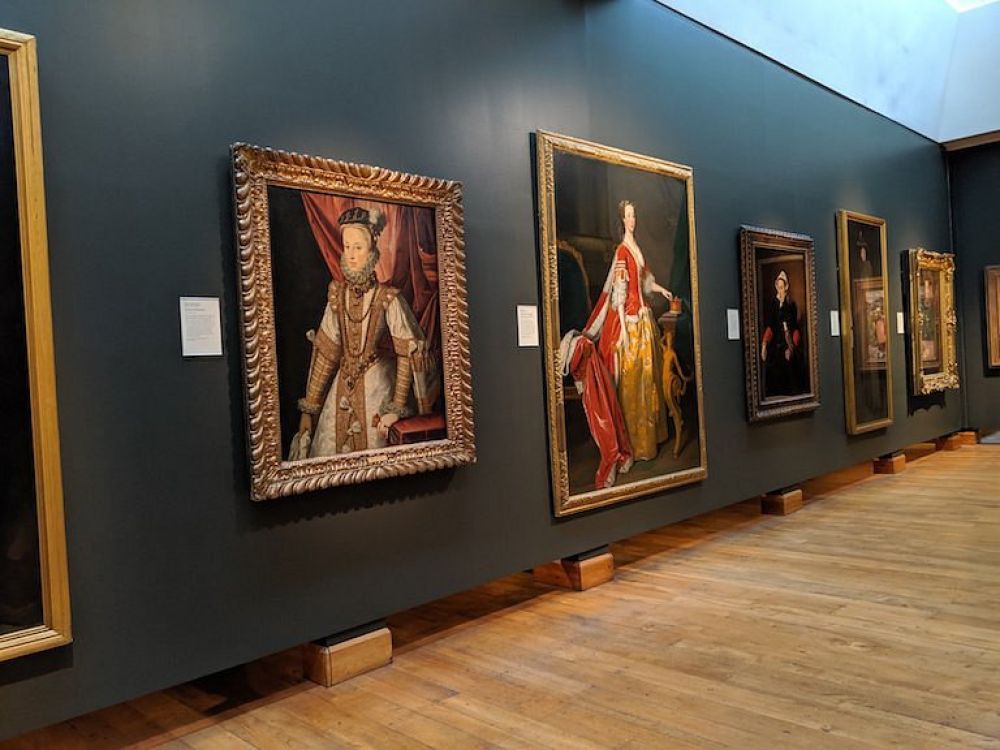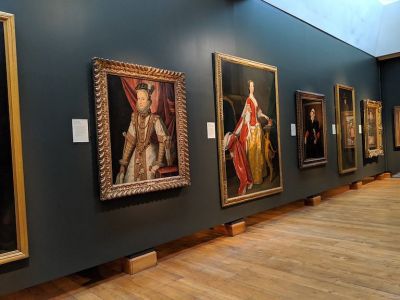

The Hunterian Museum and Art Gallery in Glasgow houses one of the most distinguished public art collections in Scotland. The permanent exhibitions tour allows visitors to explore a wealth of artifacts ranging from Roman relics, scientific instruments, to an extensive assortment of art pieces. The collection also includes items from the founder, Dr. William Hunter's original collection, which comprises coins, minerals, ethnography, and fossils. Art enthusiasts can marvel at works from James McNeill Whistler, the Glasgow Boys, and the Scottish Colourists. The museum's visible storage displays are a unique feature, providing a behind-the-scenes peek at items not regularly on view to the public. The permanent exhibition serves as a chronicle of human history through the lens of art and science, offering a rich, educational experience for all ages.
Throughout the year, The Hunterian hosts a variety of special temporary exhibitions, featuring works and artifacts that delve into specific themes, artists, or historical periods. These limited-time displays are carefully curated to offer new insights and complement the existing collections. Exhibitions range from contemporary art to showcases of historical scientific achievements, providing an ever-changing tableau for returning visitors. Each exhibition is anchored by a strong educational narrative and supported by complementary events like lectures, workshops, and guided tours, ensuring an enriching visitor experience that delves deeper into the subjects at hand.
Housed in the same building as the Hunterian Museum, the University of Glasgow's Anatomy Department often offers demonstrations that link closely with the museum's medical collections. Visitors can gain a unique perspective on the human body and learn about the groundbreaking anatomical and medical work that has been carried out at the University since the 18th century. These sessions typically include discussions and presentations of anatomical specimens, sometimes involving historical figures in medicine. The demonstrations provide a fascinating look into the human body and medical history for those with a keen interest in the sciences.
Regular gallery talks are a staple at The Hunterian Art Gallery. These talks are led by knowledgeable curators, art historians, and sometimes the artists themselves, who provide an in-depth look at specific pieces, artists, or movements represented in the gallery. This is a great opportunity for art aficionates who wish to enhance their understanding of art history and criticism. Themes can range from the details of a single masterpiece to overviews of cultural periods, offering a rich tapestry of information to attendees. The talks usually encourage audience participation, prompting a dynamic interplay between the expert and the visitors.
The Hunterian offers curator's tours which provide an expert's perspective on both the museum and the gallery's most significant pieces. These tours are led by the curators responsible for maintaining the collections, offering personal insights into the acquisition, history, and significance of a wide array of items. It's an opportunity to ask questions and learn from the passionate individuals who have extensive knowledge about the treasures housed within. The curatorial tours are a perfect way to gain a deeper understanding of the museum's collections and can be a rare chance to hear directly from those most intimate with the works on display.
The museum and gallery offer an assortment of educational and fun activities designed for families and children. These interactive workshops are aimed at engaging young minds with the world of art, science, and history through hands-on activities, crafts, and storytelling. The content and themes of these activities change regularly, often designed to complement the current special exhibitions or seasonal events. They're a fantastic way to introduce children to museum and gallery culture, ensuring that families can enjoy a captivating and informative visit together.
Friday Focus is a recurring event where visitors can drop in on Friday afternoons to engage with the museum and gallery's collections in a new light. Sessions might include short talks, handling sessions, or closer examinations of specific artifacts or works of art. These bite-sized events are designed to cater to a wide audience, allowing busy individuals to experience the museum without committing to a lengthy tour. It’s a flexible and informal way to learn something new about the rich heritage and collections.
Occasionally, The Hunterian Art Gallery hosts evening performances and concerts which take full advantage of the grand setting within its walls. These can range from classical music ensembles playing among the paintings to contemporary performances that resonate with current exhibitions. It's a unique experience that allows art and music to intersect, offering visitors culturally rich entertainment. Performances may also be held in the museum's historically significant venues, such as the Mackintosh House, providing a backdrop of architectural brilliance.
For visitors looking for a comprehensive overview, The Hunterian offers guided discovery tours. These tours are structured to provide a thorough exploration of the museum and gallery, touching upon the many highlights of the collection. They provide a narrative that spans the entirety of the Hunterian's holdings, offering context and connections between different eras and subjects. It is a fantastic choice for first-time visitors or those wanting a more structured approach to experiencing the museum.
The Mackintosh House at The Hunterian Art Gallery is a meticulous re-creation of the principal interiors from the Glasgow home of Scottish architect Charles Rennie Mackintosh and artist Margaret Macdonald Mackintosh. The tours of Mackintosh House showcase the couple's unique, innovative designs and give insights into their daily life. This tour is especially valuable to those interested in Scottish art, design, and architecture, and not only relays the historical context but also the personal stories of the Mackintoshes, drawing parallels with the wider Glasgow Style movement of the early 20th century.
